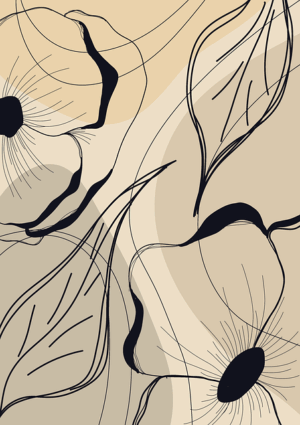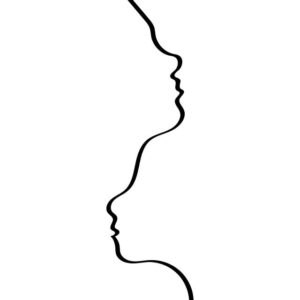Safe Botox Treatments for Forehead and Frown Lines

Botox, derived from bacteria, is a popular non-surgical treatment for reducing forehead lines and fr…….
In the realm of aesthetic medicine, Botox has emerged as a powerful tool to combat the signs of aging. One of its most sought-after applications is the treatment of crow’s feet and smile lines—fine lines and wrinkles that develop around the eyes and mouth due to muscle movement and expression. This article delves into the world of Botox for crow’s feet and smile lines, exploring its definition, global impact, economic considerations, technological advancements, regulatory landscape, challenges, successful case studies, and future prospects. By the end, readers will gain a comprehensive understanding of this popular cosmetic procedure and its significance in the beauty industry.
Botox (botulinum toxin) is a protein produced by the bacterium Clostridium botulinum. When injected into specific muscles, it blocks the release of acetylcholine, a neurotransmitter that causes muscle contraction. This results in temporary paralysis or relaxation of the targeted muscles, reducing the appearance of fine lines and wrinkles.
For crow’s feet and smile lines, Botox is typically injected into the skin near the eyes and mouth. The treatment smoothens out these areas, minimizing the depth of wrinkles caused by frequent smiling, squinting, or frowning.
The use of botulinum toxin for medical purposes dates back to the 1970s when it was initially employed to treat eye disorders like strabismus (cross-eye) and blepharospasm (eyelid twitching). In the 1980s, doctors started experimenting with Botox for non-medical aesthetic purposes, leading to its eventual popularity in cosmetic procedures.
The first FDA approval of Botox for cosmetic use in the United States came in 2002, marking a significant milestone in its acceptance as a legitimate anti-aging treatment. Over time, technological advancements have refined injection techniques and improved patient outcomes.
The global market for Botox for crow’s feet and smile lines has experienced substantial growth, driven by rising consumer awareness of aesthetic treatments and an aging population. According to a report by ResearchAndMarkets.com, the global cosmetic botulinum toxin market size is projected to reach USD 7.3 billion by 2026, growing at a CAGR (compound annual growth rate) of 4.5% from 2021 to 2026.
Key regions leading in Botox adoption include North America, Europe, and Asia-Pacific. The United States accounts for the largest share due to its advanced medical infrastructure and high disposable income levels. However, markets like China and India are also witnessing rapid growth as economic development increases access to aesthetic treatments.
Several trends are influencing the global landscape of Botox for crow’s feet and smile lines:
Non-Invasive Cosmetic Procedures: The preference for non-surgical, minimally invasive procedures is on the rise, making Botox a popular choice among consumers seeking immediate yet temporary results.
Aging Population: An aging global population, particularly in developed countries, contributes to increased demand for anti-aging treatments, including Botox.
Digital Marketing and Influencers: Social media platforms and online influencers play a significant role in shaping consumer preferences and trends in the aesthetic industry.
Regulatory Compliance: Stringent regulatory frameworks in some regions have led to advancements in product quality and safety standards, ensuring better patient outcomes.
The Botox market is highly competitive, with several key players dominating the landscape:
| Company | Market Share (2021) | Products |
|---|---|---|
| Allergan (Abbot Laboratories) | 45% | Botox, Dysport |
| Merz Pharma | 18% | Botulinum Toxin Type A |
| GSK (GlaxoSmithKline) | 12% | Azzelra (Botulinum Toxin Type A) |
| Other Players | 25% | Diverse offerings |
These companies invest heavily in research and development to innovate and maintain their market position. The high entry barrier, coupled with intellectual property rights, allows established brands to sustain their dominance.
The aesthetic industry, including Botox treatments, attracts significant investments from various sources:
Pharmaceutical Companies: Large pharmaceutical firms invest in R&D to develop new botulinum toxin products and enhance existing ones.
Private Equity Firms: These firms often back smaller aesthetics companies, providing capital for expansion and market penetration.
Consumer Discretionary Funds: With increasing disposable incomes, consumers worldwide are willing to invest in their appearance, driving demand and revenue growth.
Botox treatments contribute to economic systems through:
Revenue Generation: Aesthetic clinics, dermatologists, and plastic surgeons generate substantial revenue from Botox procedures, creating employment opportunities and stimulating local economies.
Tourism: High-end cosmetic treatments attract medical tourists, particularly from regions with stringent regulations or limited access to advanced aesthetic procedures.
Product Sales: Pharmaceutical companies earn revenue through the sale of Botox products, fostering further research and development in the field.
One of the most significant technological advancements is the development of sophisticated injection devices designed to deliver Botox precisely. These devices offer:
Enhanced Accuracy: Micro-needles, fine-gauge needles, and specialized pens ensure precise injections, minimizing discomfort and reducing the risk of complications.
Improved Patient Comfort: Advanced devices often incorporate features like anesthesia or vibration to enhance patient comfort during the procedure.
Research continues to refine botulinum toxin formulations:
Longer-Lasting Formulations: Newer products offer extended effects, reducing the need for frequent treatments and increasing patient satisfaction.
Customized Treatments: With advancements in technology, practitioners can tailor Botox injections to individual needs, ensuring optimal results.
Digital imaging tools assist practitioners in planning treatments more efficiently:
3D Imaging: Advanced 3D mapping helps visualize facial structures, allowing for more accurate treatment planning and improved patient outcomes.
Virtual Consultations: Online platforms enable patients to consult with healthcare providers virtually, enhancing accessibility and convenience.
To ensure patient safety, medical professionals follow strict protocols:
Sterile Environment: Treating areas must be sterile to prevent infections and other complications.
Proper Training: Healthcare providers should undergo specialized training in Botox injections to minimize risks and deliver effective treatments.
Patient Selection: Not all patients are suitable candidates for Botox. Thorough assessments help identify contraindications and potential risks.
While rare, potential complications include:
Bruising and Swelling: Minor side effects that typically resolve within a few days.
Asymmetry or Uneven Treatment: This can occur if injections are not administered correctly, but it is usually temporary and correctable.
Allergic Reactions: Rare but serious reactions require immediate medical attention.
Muscle Weakness: In rare cases, Botox can cause temporary weakness in treated muscles, affecting facial expressions.
Botox for crow’s feet and smile lines has established itself as a prominent anti-aging treatment worldwide, offering temporary yet effective results. With technological advancements, improved safety standards, and rising consumer demand, the global market is poised for continued growth. As regulatory frameworks evolve, patients can expect even safer and more precise Botox treatments in the future.

Botox, derived from bacteria, is a popular non-surgical treatment for reducing forehead lines and fr…….

Botox for Forehead Lines and Frown Lines is an FDA-approved treatment using botulinum toxin to relax…….

Botox for Forehead Lines and Frown Lines is an FDA-approved, safe, temporary solution to reduce dyna…….

Botox, an FDA-approved treatment, effectively reduces fine lines and wrinkles on the forehead and be…….

Botox has emerged as a top non-surgical solution for treating forehead lines, frown lines, and crow&…….

Botox, derived from bacteria, is a popular non-surgical treatment for reducing facial lines and wrin…….